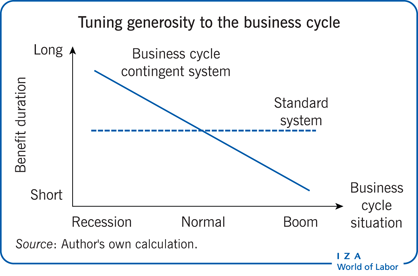Elevator pitch
High unemployment and its social and economic consequences have lent urgency to the question of how to improve unemployment insurance in bad times without jeopardizing incentives to work or public finances in the medium term. A possible solution is a rule-based system that improves the generosity of unemployment insurance (replacement rate, benefit duration, eligibility conditions) when unemployment is high and reduces the generosity when it is low.

Key findings
Pros
The impact of unemployment insurance can be strengthened by improving its generosity in bad economic times, when the need is greatest.
Making unemployment insurance less generous during good economic times can strengthen job-search incentives.
Such flexible terms for unemployment insurance are consistent with balancing public budgets across the business cycle.
Business cycle contingencies can be implemented within a rule-based system to ensure automatic adjustments that are in tune with the business cycle.
Cons
There can be administrative difficulties in adjusting the unemployment system to the business cycle.
Determining the trigger points to release changes in the system can be difficult.
Important to calibrate the unemployment insurance system such that it does not conserve a high structural level of unemployment.
There is a risk of political bias, implying asymmetric responses over the business cycle.